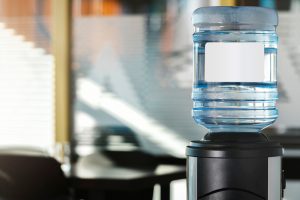On July 12, 2021, the EPA announced per- and polyfluoroalkyl substances (PFAS) are among a new group of contaminants being considered for monitoring under the Safe Drinking Water Act. The PFAS were part of the EPA’s “Draft Contaminant Candidate List 5 (CCL 5), which provides the latest list of drinking water contaminants that are known or anticipated to occur in public water systems and are not currently subject to EPA drinking water regulations. As directed by the Safe Drinking Water Act, EPA’s CCL 5 identifies priority contaminants to consider for potential regulation to ensure that public health is protected.”
The latest Draft CCL 5 includes 66 individual chemicals, 12 microbes, and 3 chemical groups: PFAS, cyanotoxins, and disinfection byproducts (DBPs).
“These contaminants have been identified as agency priorities and contaminants of concern for drinking water,” according to the EPA. “PFAS are proposed as a group, with the exception of PFOA and PFOS because the agency is moving forward with national primary drinking water standards for these two contaminants. This action is in keeping with the agency’s commitment to better understand and ultimately reduce the potential risks caused by PFAS.”
PFAS are known as “forever” chemicals because they are fluorinated, meaning they never completely degrade and accumulate over time in people and animals. They’ve been linked to a variety of health issues such as cancer, kidney problems, heart disease, liver disease, and lowered immunity.
There are approximately 9,000 varieties of PFAS, and scientific research has shown “that the entire class is toxic to humans and animals, and accumulates in the environment,” according to The Guardian.
“Environmental groups have argued for several years that developing rules for each individual compound is failing to keep the public safe,” The Guardian adds.
“With over 1,000 PFAS chemicals approved for use in the United States, a chemical-by-chemical approach to setting drinking water limits would likely take many lifetimes,” says David Andrews, a senior scientist with Environmental Working Group, in The Guardian article.
“Though the EPA announcement marks only the beginning of a years-long process, the move is significant because the agency does not place any limits on PFAS in drinking water, and states’ rules limit fewer than 10 types of individual PFAS compounds,” The Guardian adds.
This year’s CCL 5 marks an improved process for the EPA that includes “new approaches to rapidly screen a significantly larger number of contaminants, prioritizing data most relevant to drinking water exposure and the potential for the greatest public health concern, and better consideration for sensitive populations and children,” says the EPA.
“EPA plans to consult with the Science Advisory Board (SAB) on the Draft CCL 5 in the fall of 2021,” the EPA adds. “The agency will consider public comments and SAB feedback in developing the Final CCL 5, which is expected to be published in July 2022. After a final CCL is published, the agency will undertake a separate regulatory determination process to determine whether or not to regulate contaminants from the CCL.… EPA is seeking comment on the Draft CCL 5 for 60 days after this action publishes in the Federal Register.”
It is unclear how long the EPA will take to put new limits in place. “It has taken the EPA up to five years to determine if it is going to regulate contaminants under the Safe Drinking Water Act, and additional time on top of that to develop the limits,” according to The Guardian. “The EPA did not immediately answer specific questions about a timeline.”

